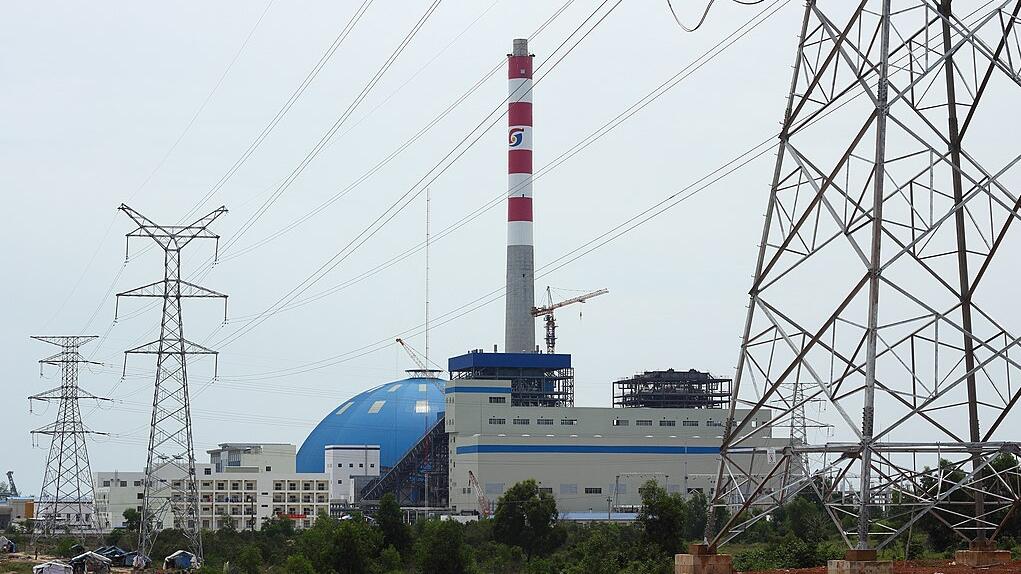 Policy & Regulation
Policy & RegulationBusiness Practices
New decade opens with cascade of US coal plant closures
Summary
Coal-fired power plants shut down at the second-fastest pace on record in 2019, despite Donald Trumps efforts to prop up the industry. The warm season has cut into electricity demand, while ultra-low gas prices mean more of the demand that remains will be satisfied by gas-fired units rather than coal plants. The broader trends have been playing out this month in more than a dozen U.S. states. In Arizona, utility APS promised to ditch coal by 2031, and Oregon-based PacifiCorp announced plans to shutter its 395-megawatt Cholla 4 coal plant in
in northern Arizona in 2020, 15 years early. And in Arizona, developer Daybreak Power is now pitching a US$3.6-billion, 2.2-gigawatt pumped storage facility that would use transmission lines from the Navajo site to deliver solar-generated power. to deliver solar power to customers through the end of next year.
Open full article
New decade opens with cascade of US coal plant closures
The new decade is opening with a mounting cascade of plant closures in the United States coal industry, with investors abandoning ship, revenue being driven down by record-low gas and renewable energy prices, and communities asking increasingly tough questions about the economic, environmental, and health impacts of the coal-fired generating stations in their midst.
“Global capital flight from thermal coal and the coal-fired power sector is already at a canter in 2020,” the Institute for Energy Economics and Financial Analysis commented last week, after investment giant BlackRock’s unexpected announcement that it would divest its coal assets. “At the same time, asset manager Aegon has announced a new, enhanced coal divestment program. In total, 116 globally significant banks and insurers have now put in place increasingly stringent coal policies to move towards alignment with the Paris Agreement.”
The conclusion IEEFA reaches: With 2020 opening on a catastrophic example of the impacts of unrestrained climate change, “corporate greenwash is moving to polices of substance.”
The momentum in the U.S. was already well established in 2019, with coal closures hitting 15.1 gigawatts (that would be 15.1 billion watts of generating capacity). “U.S. coal-fired power plants shut down at the second-fastest pace on record in 2019,” despite Donald Trump’s efforts to “prop up the industry,” Reuters reports. The year’s coal retirements, just second to the 19,500 GW shuttered by President Barack Obama in 2015, were enough to power about 15 million American homes.
All told, the U.S. has dropped 39 GW of coal capacity since Trump took over the White House in 2017.
Similar to the price challenges facing North American oil and gas, Reuters analyst John Kemp says coal is “facing the perfect storm, with a mild winter and slumping natural gas prices adding to their long-term problems with competitiveness and pushing more towards retirement.” The warm season has cut into electricity demand, “while ultra-low gas prices mean more of the demand that remains will be satisfied by gas-fired units rather than coal plants.” Over the last year or two, as well, much of the price competition has come from solar and wind—including some unsubsidized projects undercutting both coal and gas based on price.
The broader trends have been playing out this month in more than a dozen U.S. states.
In Arizona, utility APS promised to ditch coal by 2031, and Oregon-based PacifiCorp announced plans to shutter its 395-megawatt Cholla 4 coal plant in northern Arizona in 2020, 15 years early. Also in Arizona, where the mammoth, 2,250-megawatt Navajo coal plant shut down last year, developer Daybreak Power is now pitching a US$3.6-billion, 2.2-gigawatt pumped storage facility that would use transmission lines from the Navajo site to deliver solar- and wind-generated power to Los Angeles, Las Vegas, and Phoenix.
“We’re talking about soaking up huge volumes of renewable energy out in the Southwest, and then releasing it basically through the night,” said Daybreak CEO Jim Day. “There’s a lot of good applications for lithium-ion batteries, but that really big, bulk storage over pretty long durations is…not a good fit.”
Arkansas utility regulators approved an agreement between the U.S. Sierra Club and Southwestern Electric Power Company to shut down the 650-MW Dolet Hills coal plant in Louisiana, and the Iowa Utility Board asked for a study that could pave the way to earlier coal retirements.
Coal-heavy Indiana saw a flurry of activity, with Hoosier Energy committing to shut down its 1,070-MW Merom generating station in 2023, Indianapolis Power & Light promising in December to close two coal plants totalling 630 MW in 2021 and 2023, and coal miner Sunrise Coal announcing 90 layoffs last week. Around mid-month, Indiana state legislator Ed Soliday introduced a bill that would prevent state regulators from shutting down coal plants prematurely without instructions from a federal authority other than the Environmental Protection Agency, or a determination of public necessity within the state.
Hays, Kansas-based Sunflower Electric Power abandoned plans to spend $2.2 billion building a new coal plant in the state, while demand from corporate customers pushed two utilities in coal-dependent Kentucky to plan a 100-megawatt solar purchase. The Public Service Company of Oklahoma finalized plans to shut its 650-MW Oklaunion coal plant in October.
Minnesota ratepayers stood to gain $30 million from Xcel Energy’s plans to idle two coal plants for six months of each year and cut millions of tons of carbon pollution along the way. The announcement prompted questions about whether Wisconsin utilities could do the same, even as the state’s Dairyland Power Cooperative said it would close its Genoa coal plant by the end of next year, and analysts in Michigan pointed to millions of dollars that ratepayers could save by dumping uneconomic coal plants.
Across the board, analysts with Morgan Stanley and Moody’s Investors Service expected utility customers to save $8 billion per year in the shift from coal to renewables.
In the southwest, “Tri-State Generation and Transmission Association, increasingly under pressure from its members and renewable energy advocates for its reliance on coal, plans to close two of its coal-fired power plants and a coal mine in Colorado and New Mexico,” the Denver Post reports. And water scarcity was one of the motivators behind Xcel Energy’s decision to shut down its 1,067-MW Tolk coal station, which serves New Mexico and Texas, a decade early in 2032.
News coverage also brought out the local environmental impacts of coal-fired generation, with the Georgia community that welcomed the country’s biggest coal plant now worried that it’s polluting the town water supply, and a water permit fight in Illinois raising concerns that Midwestern U.S. coal mines are “trying to cut regulations and to cut corners” as they struggle to survive.
Author: The Energy Mix
Image credit: pxhere



